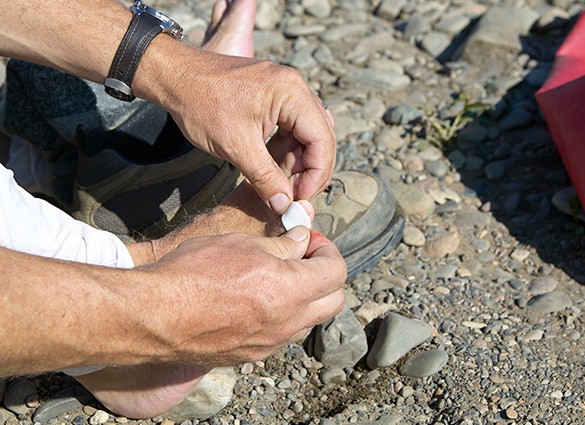Did you know blisters are the number one reason for walkers to abandon their trek?
Why are blisters a problem?
Every walker, bush walker or hiker knows the perils of painful foot blisters. Something so seemingly insignificant can turn your journey into a very uncomfortable and unpleasant experience.
What causes foot blisters?
The answer is shear. Shear is the excessive stretching and tearing beneath the surface of the skin that leads to blisters. Shear is influenced by three things: the nature of your skin; your foot posture or function; and the amount of skin friction.

Blisters

What do I do if I get a blister?
Intact Blister
Blisters are always best left intact to heal. To allow this to happen without further injury you will need to deflect pressure from the area using a 7mm felt donut pad covered in fixomull strapping. If the blister is difficult to deflect pressure from, swabbing the blister and then lancing it with a #15 scalpel blade to reduce direct pressure is necessary. (please note: any lanced blister is at risk of infection, please dress the blister with a sterile island dressing once it has been drained.
Ruptured Blister
Sometimes, it is not possible to keep the blister intact and the roof of the lesion has come away, in this situation flush the raw wound with sterile saline, dry the surrounding tissue and dress with a sterile Comfeel dressing.
Hot Spots
Where you are consistently getting a hot spot or blister apply an Engo patch to the shoe, innersole, or orthotic adjacent to the hot spot to reduce the sheer force in that area.
Read about our prevention strategies for Blisters.

